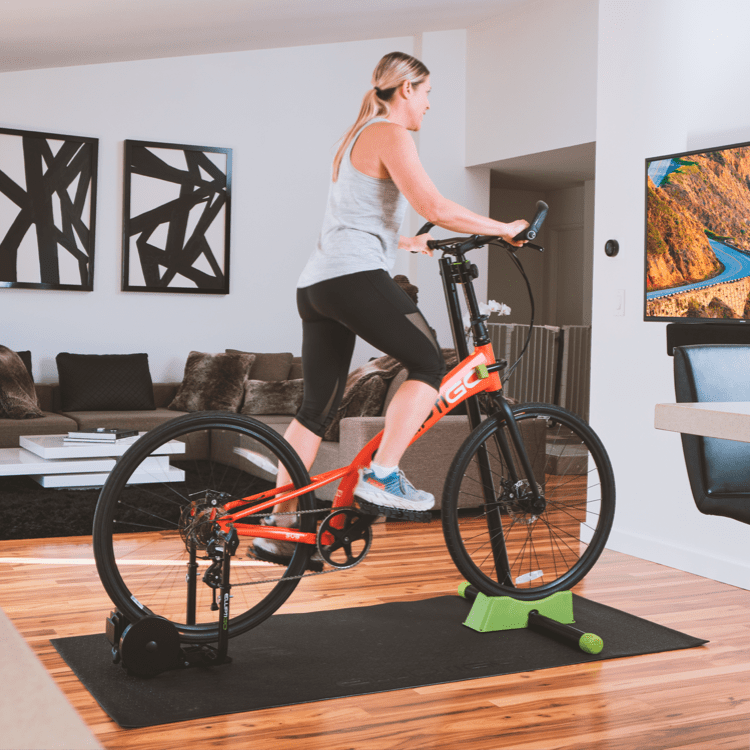In the quest for fitness, people often look for the most effective ways to burn calories. Two popular options are cycling and running, both offering excellent cardiovascular workouts. However, many individuals wonder: which activity burns more calories? This article explores the differences in caloric expenditure between cycling and running, considering various factors such as intensity, duration, and individual fitness levels.
Understanding Caloric Burn in Physical Activities
Before delving into the specifics of bicycle calories burned compared to running, it’s essential to understand how calorie burn works. Caloric burn is influenced by several factors, including body weight, exercise intensity, time spent on the activity, and individual metabolism. Generally, the more intense the activity and the longer it is performed, the more calories you’ll burn.
Both cycling and running are effective forms of aerobic exercise, elevating heart rates and enhancing cardiovascular health. These exercises utilize multiple muscle groups, which increases energy expenditure. However, the way energy is consumed can differ based on the mechanics of each activity.
While the concept of calorie burn is simple, calculating the exact number of calories burned can be complex. Factors like the terrain (road versus trail), weather conditions, and even the rider’s or runner’s efficiency play a significant role in determining caloric expenditure during a workout. Understanding how each activity influences calorie burn helps clarify the comparison between cycling and running.

Caloric Expenditure: The Basics
Caloric expenditure can be calculated using the Metabolic Equivalent of Task (MET). MET values represent the energy cost of physical activities. For cycling at moderate pace, the MET value can range from 4 to 8, while running could have a MET value from 5 to 12, depending on speed.
For instance, a person weighing 155 pounds burns approximately 298 calories cycling at a moderate pace (12-13.9 mph) for one hour. Conversely, the same person will burn about 660 calories running at a pace of 5 mph for an hour. The disparity is evident; however, these figures necessitate consideration of additional factors that can influence calorie burn.
It’s vital to recognize that heavier individuals often burn more calories, as their bodies require more energy to perform the same activity. Therefore, personal metrics, including weight and overall fitness levels, should factor into discussions about calorie burning. By calculating MET values and considering individual characteristics, you can gain greater insights into the differences in calorie expenditure between cycling and running.
Analyzing Bicycle Calories Burned
Cycling is a popular choice for people seeking a low-impact exercise option that still provides excellent cardiovascular benefits. The bicycle’s design allows riders to engage various muscle groups, including the legs and core. The level of resistance experienced when pedaling also impacts caloric expenditure significantly.
Factors Influencing Bicycle Calories Burned
When determining the number of bicycle calories burned, several factors come into play, including intensity and duration. A leisurely ride (less than 10 mph) might lead to a calorie burn of around 200-300 calories per hour for a 155-pound person. However, increasing the pace to a more vigorous cycle, such as 14-16 mph, can elevate calorie burn to approximately 600-700 calories per hour.
Terrain also affects calorie burn during cycling. Riding uphill increases effort and intensity, leading to greater caloric expenditure. Conversely, cycling downhill requires less effort, resulting in fewer calories burned.
Additionally, cycling style also matters. Road biking tends to burn more calories than stationary biking because of the constant resistance and variable terrains cyclists usually experience. Incorporating high-intensity intervals while cycling can further boost calorie burn, enhancing the workout’s efficacy.

Advantages of Cycling for Caloric Burn
Cycling has some unique advantages that make it an appealing option for burning calories. First, it is a low-impact exercise, meaning it puts less stress on the joints compared to running. This benefit is particularly advantageous for those recovering from injuries or who experience discomfort during high-impact activities.
Second, cycling allows for versatility. Riders can choose terrain, speed, or intensity, tailoring their workout according to personal preferences. Incorporating group cycling or outdoor rides can also provide a social element that keeps individuals motivated and engaged over time.
The duration of workouts can be extended due to cycling’s lower perceived exertion. Many individuals find they can cycle longer than they can run while enjoying the workout. This capacity contributes to overall calorie burn, resulting in potentially higher energy expenditure during longer rides.
Exploring Running and Caloric Burn
Running, as a high-impact cardio workout, is well-known for its effectiveness in burning calories. The straightforward nature of running makes it easy for individuals to understand its benefits without needing special equipment. Whether jogging on a treadmill or sprinting outside, running is an efficient way to increase calorie expenditure.
Factors Influencing Running Calories Burned
As with cycling, several factors impact the number of calories burned while running. The speed at which a person runs has a significant effect. A 155-pound individual running at a pace of 5 mph can burn about 660 calories per hour, while the same person running at 6 mph may burn around 727 calories.
Running introduces variability based on terrain. Trail running or running uphill naturally requires more energy and increases caloric expenditure compared to flat, even surfaces. Running outdoors can also introduce environmental factors, like wind resistance, affecting overall calorie burn.
Duration plays a crucial role in running, too. The longer you run, the more calories you burn. However, many people perceive running as more strenuous than cycling, often leading to shorter workouts.

Advantages of Running for Caloric Burn
Running provides numerous advantages for those wanting to maximize caloric burn. Its high-impact nature means that bone density can be improved, promoting better overall health. Moreover, running is recognized for being time-efficient; individuals can achieve significant caloric expenditure in a relatively short period.
Another benefit of running is the immense variety of styles and types. Runners can choose to sprint, jog, or participate in interval training, all of which can optimize calorie burn.
Additionally, running appears more externally rewarding to many people. Whether competing in a race or training for specific distances, runners often see tangible progress in terms of speed and endurance. This promise of improvement can boost motivation, further encouraging individuals to pursue their fitness goals.
Comparing Caloric Burn: Running vs. Cycling
While both cycling and running have their respective advantages, comparing the caloric burn offers insights to help determine the most suitable exercise for various individuals. The comparison ultimately boils down to personal preferences, fitness goals, and physical capabilities.
Intensity and Efficiency
Running typically has a higher MET value than cycling, meaning it usually burns more calories per minute. However, the difference in caloric expenditure varies based on intensity. Some individuals may find they can maintain higher intensity levels while running than cycling, which can lead to greater energy expenditure over time.
Cycling, on the other hand, allows for extended workout durations due to its low impact nature. If one can cycle for more extended periods, the total calorie burn may surpass that of running. Ultimately, the higher the intensity and longer the duration, the better either activity will perform in calorie expenditure.
Personal Preference and Sustainability
Engagement and enjoyment are vital factors when choosing between cycling and running for caloric burn. Individuals are more likely to stick with an activity they enjoy, leading to long-term fitness benefits. Some may prefer the feeling of running in nature, while others may relish the control and comfort found in cycling sessions.
Sustainability should also be considered. For instance, if a person has joint concerns or injuries, cycling may help prevent strain while still delivering effective cardio workouts. Conversely, a person seeking quick, effective workouts may lean toward running.
Overall Health Effects
Both activities can enhance cardiovascular health, improve overall fitness, and contribute to weight loss when combined with a healthy diet. Incorporating either into a fitness routine can lead to improved physical and mental well-being.
To summarize, personal factors, goals, and lifestyle must be considered when determining whether cycling or running is the right fit. Both have merit, and one activity may be more beneficial than the other, depending on the individual’s circumstances.
Conclusion: Choosing What’s Right for You
When comparing bicycle calories burned versus running, each activity offers unique benefits and challenges. Running generally burns more calories in shorter periods, while cycling’s lower impact on joints allows for longer sessions. Ultimately, your choice should reflect your preferences, lifestyle, and fitness goals.
Considering that both exercises support cardiovascular health and weight management, the most effective workout is one that you enjoy and commit to over the long term. Exploring both activities may offer a balanced approach to fitness, allowing you to reap the benefits of both cycling and running.

